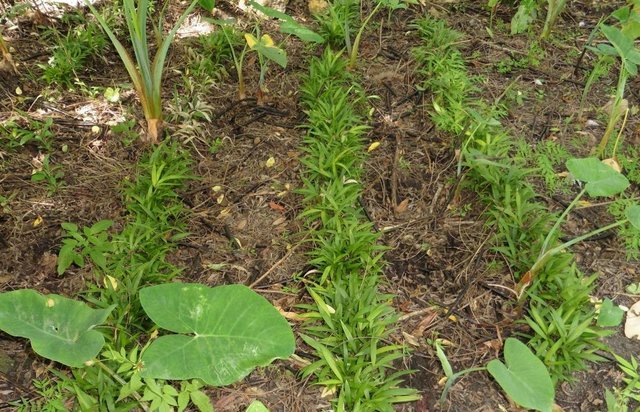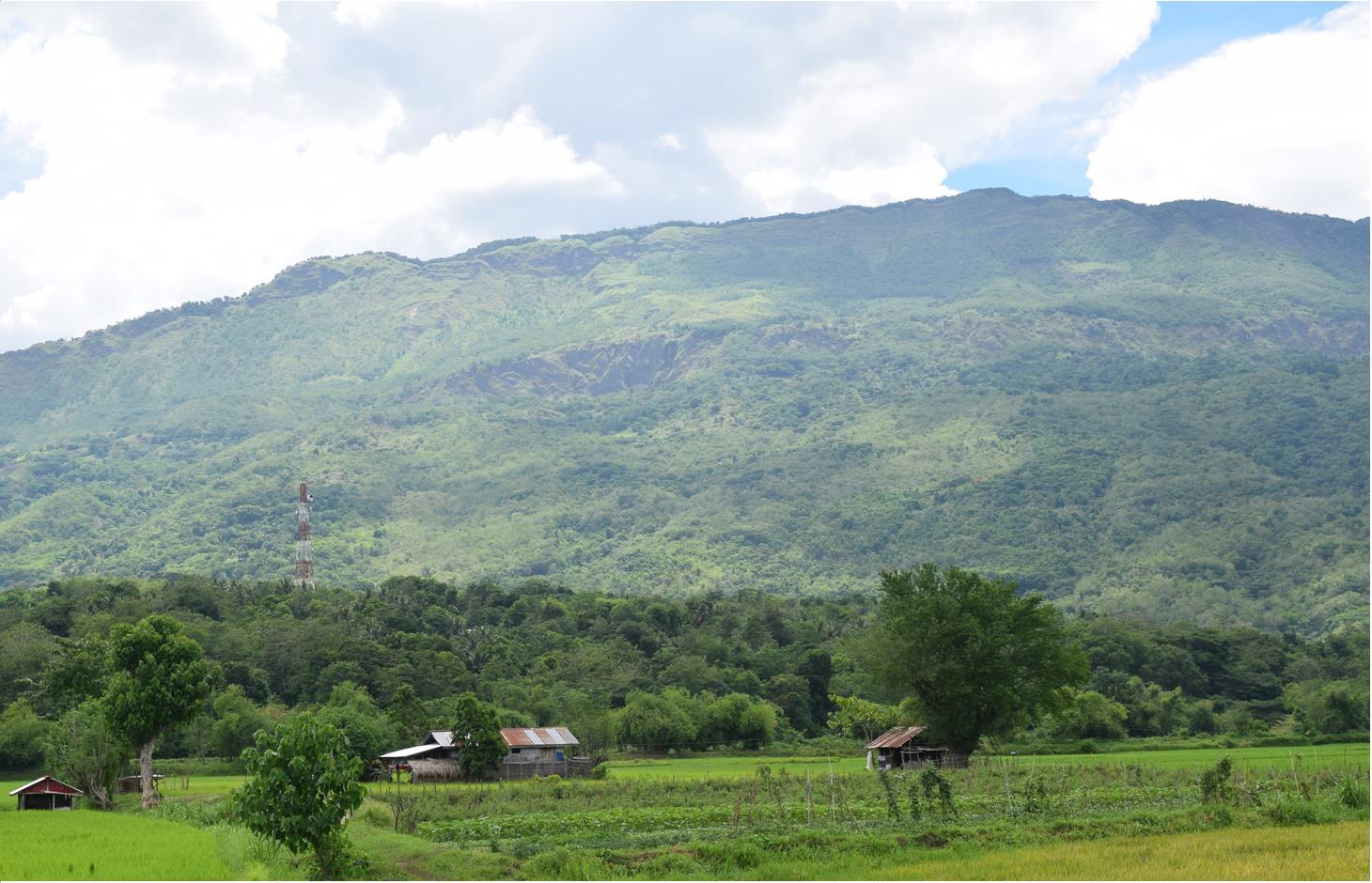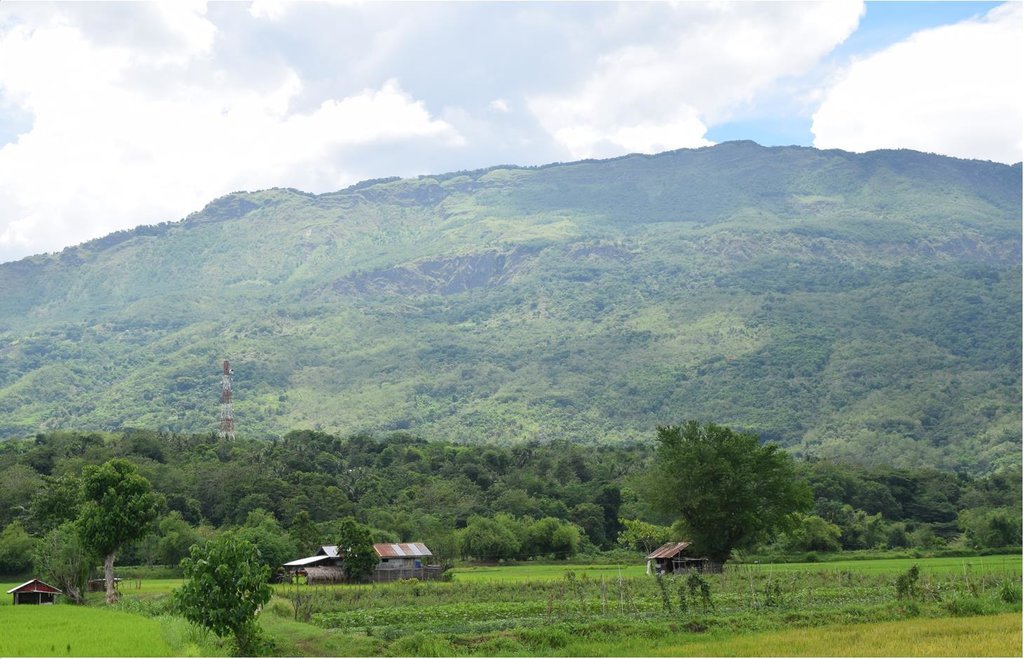Community-Based Forest Management [Philippines]
- Creation:
- Update:
- Compiler: Isabelita Austria
- Editor: –
- Reviewer: Deborah Niggli
Community Forestry, Social Forestry
approaches_1956 - Philippines
View sections
Expand all Collapse all1. General information
1.2 Contact details of resource persons and institutions involved in the assessment and documentation of the Approach
SLM specialist:
Dacumos Evangeline
Bureau of Soils and Water Management-Soil Conservation and Management Division
Philippines
SLM specialist:
Dinamling Djolly Ma.
Bureau of Soils and Water Management-Soil Conservation and Management Division
Philippines
Name of project which facilitated the documentation/ evaluation of the Approach (if relevant)
Decision Support for Mainstreaming and Scaling out Sustainable Land Management (GEF-FAO / DS-SLM)Name of the institution(s) which facilitated the documentation/ evaluation of the Approach (if relevant)
Department of Agriculture-Region VIII (DA-8) - Philippines1.3 Conditions regarding the use of data documented through WOCAT
When were the data compiled (in the field)?
21/07/2015
The compiler and key resource person(s) accept the conditions regarding the use of data documented through WOCAT:
Yes
1.4 Reference(s) to Questionnaire(s) on SLM Technologies

Littuko Growing for Forest Enhancement [Philippines]
Growing of rattan is done by upland farmers as part of the Community-Based Forest Management (CBFM).
- Compiler: Philippine Overview of Conservation Approaches and Technologies
2. Description of the SLM Approach
2.1 Short description of the Approach
Community-Based Forest Management (CBFM) refers to the organized efforts to work with communities in and near public forestlands with the intent to protect, rehabilitate, manage, conserve, and utilize the resources in partnership with the Local Government Units (LGUs) and other stakeholders.
2.2 Detailed description of the Approach
Detailed description of the Approach:
The objectives of the CBFM are the following: to develop, protect, conserve and utilize forest lands through sustainable forest management practices; to generate additional income for forest communities towards poverty reduction and hunger mitigation in the uplands; to promote equity through the provision of long term land tenure security and access to forest resources through issuance of CBFM agreements and certificate of stewardship; and to enhance the capacity of CBFM agreement holders as climate-resilient forest land resources managers.
The methods involved in the approach include agroforestry, plantation establishment, enrichment planting ,forest protection and conservation of existing forests. Agroforestry is the combination of forest trees, fruit trees and annual crops including livestock in the same piece of land. Plantation establishment is growing of forest trees in degraded grassland areas. Part of the enrichment planting is growing of rattan 'littuko', fruit trees, and indigenous species (dipterocarp,etc) along with existing trees in the area to improve forest cover and species diversification.
The project of CBFM in Nueva Vizcaya was initiated in 1998 and ended in 2002.The stages of implementation started with the preparatory stage, then the People's Organization formation and issuance of tenure instrument. It was followed by the planning stage, implementation stage then the monitoring, assessment and reporting stage.
The stakeholders in the approach are the Department of Environment and Natural Resources (DENR), Community or the People's Organization (PO), Local Government Unit (LGU), Non-government organizations, other government agencies, academe, private sector and donor institution. DENR provided the funding support in the implementation of CBFM, twenty five(25) years security of tenure renewable for another 25 years to qualified organization of forest occupant in the management of forestlands thru CBFM agreement, provision of technical assistance, formulation of guidelines, monitoring and evaluation. The POs serve as managers of the forestlands allocated to them through CBFM agreement. They are responsible in the development, protection, and maintenance of the area. The LGU provides support to communities in the implementation of CBFM within its jurisdiction.
2.3 Photos of the Approach
2.5 Country/ region/ locations where the Approach has been applied
Country:
Philippines
Region/ State/ Province:
Bayombong
Map
×2.6 Dates of initiation and termination of the Approach
Indicate year of initiation:
1998
If precise year is not known, indicate approximate date when the Approach was initiated:
10-50 years ago
Year of termination (if Approach is no longer applied):
2002
2.7 Type of Approach
- project/ programme based
2.8 Main aims/ objectives of the Approach
The main objectives of the approach focused on the economic, social and environmental aspect to increase income and standard of living, to develop the capacity of the communities to sustain and manage the forestlands and resources, to promote social justice through security of tenure, use rights, and to reclaim or rehabilitate degraded lands and sustain its productivity.
2.9 Conditions enabling or hindering implementation of the Technology/ Technologies applied under the Approach
social/ cultural/ religious norms and values
- enabling
The three farmers associations were organized into Federation of Vista Hills, Kalongkong and Kakilingan Upland Farmers, Inc., using CBFM as entry point.
availability/ access to financial resources and services
- enabling
The International Tropical Timber Organization (ITT0) provided financial support for plantation establishment experiment and for developing the area through CBFM.
institutional setting
- enabling
The Buenavista Upland Development Advisory Council, with representatives from DENR, Community, DA, LGU, Academe, NCIP, and DPWH was organized to provide assistance in the implementation of CBFM in Buenavista, Bayombong, Nueva Vizcaya.
legal framework (land tenure, land and water use rights)
- enabling
Through CBFM, the Federation of Vista Hills, Kalongkong and Kakilingan was awarded with CBFM Agreement to manage the area for 25 years, renewable for another 25 years .
knowledge about SLM, access to technical support
- enabling
Through CBFM, training and technical support were provided by DENR and other service providers.
workload, availability of manpower
- enabling
It became holistic through the Federation under CBFM.
other
- enabling
Through people's participation, the Federation was able to reduce or control occurence of forest fires in the area.
3. Participation and roles of stakeholders involved
3.1 Stakeholders involved in the Approach and their roles
- local land users/ local communities
Communities living within and near forests dependent on the resources for livelihood including indigenous people
- SLM specialists/ agricultural advisers
Department of Environment and Natural Resources
- researchers
Nueva Vizcaya State University
3.2 Involvement of local land users/ local communities in the different phases of the Approach
| Involvement of local land users/ local communities | Specify who was involved and describe activities | |
|---|---|---|
| initiation/ motivation | interactive | Community Organizing Training, Orientation about CBFM, Community Mapping |
| planning | interactive | Agroforestry and Farm Planning, Planning and Management of Community Enterprise, Formulation and Preparation of Community Resources Management Framework (CRMF), Farm Planning and Agroforestry Development |
| implementation | interactive | Livelihood training such as dressmaking, fossilized flower, agroforestry and soil and water conservation (SWC) technologies |
| monitoring/ evaluation | interactive | Environmental Performance Monitoring, Project Development and Management, Project Accounting and Reporting System |
| research | interactive |
3.3 Flow chart (if available)
Description:
Organizational structure of the Forest Management Bureau at the National Level Showing the location of the community forestry section where CBFM is the major concern (DENR-FMB)
Author:
For. Isabelita V. Austria (DENR-Forest Management Bureau)
3.4 Decision-making on the selection of SLM Technology/ Technologies
Specify who decided on the selection of the Technology/ Technologies to be implemented:
- mainly land users, supported by SLM specialists
Explain:
The land users have traditional farming practices which were enhanced through technical assistance and training provided to them by SLM specialist.
Specify on what basis decisions were made:
- personal experience and opinions (undocumented)
4. Technical support, capacity building, and knowledge management
4.1 Capacity building/ training
Was training provided to land users/ other stakeholders?
Yes
Specify who was trained:
- land users
- field staff/ advisers
Form of training:
- on-the-job
- farmer-to-farmer
- demonstration areas
Form of training:
- workshops
4.2 Advisory service
Do land users have access to an advisory service?
Yes
Specify whether advisory service is provided:
- on land users' fields
4.4 Monitoring and evaluation
Is monitoring and evaluation part of the Approach?
Yes
If yes, is this documentation intended to be used for monitoring and evaluation?
No
4.5 Research
Was research part of the Approach?
Yes
Specify topics:
- economics / marketing
- ecology
- technology
Give further details and indicate who did the research:
Done by the Nueva Vizcaya State University (NVSU) and the DENR-ITTO CBFM Project, Doctorate students from Nepal and Myanmar and Masteral students from DENR.
5. Financing and external material support
5.1 Annual budget for the SLM component of the Approach
If precise annual budget is not known, indicate range:
- 100,000-1,000,000
Comments (e.g. main sources of funding/ major donors):
ITTO-Yokado Co., Japan; Government of Japan; USA; Australia and Republic of Korea -> together 100%
5.2 Financial/ material support provided to land users
Did land users receive financial/ material support for implementing the Technology/ Technologies?
Yes
If yes, specify type(s) of support, conditions, and provider(s):
Financial support during the initial stage of CBFM implementation
5.3 Subsidies for specific inputs (including labour)
- agricultural
| Specify which inputs were subsidised | To which extent | Specify subsidies |
|---|---|---|
| seedlings | partly financed | |
If labour by land users was a substantial input, was it:
- voluntary
5.4 Credit
Was credit provided under the Approach for SLM activities?
No
5.5 Other incentives or instruments
Were other incentives or instruments used to promote implementation of SLM Technologies?
No
6. Impact analysis and concluding statements
6.1 Impacts of the Approach
Did the Approach improve knowledge and capacities of land users to implement SLM?
- No
- Yes, little
- Yes, moderately
- Yes, greatly
Significant increase in forest cover through rehabilitation of grasslands to forest plantation. Enhanced natural regeneration through effective forest protection, enrichment planting of dipterocarp species,rattan, and multi-storey agroforestry development.
Did the Approach empower socially and economically disadvantaged groups?
- No
- Yes, little
- Yes, moderately
- Yes, greatly
They were made stewards of forestlands for 25 years,renewable for another 25 years. Also, they were granted use rights and more than 50% of the Peoples' Organization are with active registration and qualified to enter into livelihood development contract with the DENR thru National Greening Program(NGP) and CBFM-CARP.
Did the Approach improve issues of land tenure/ user rights that hindered implementation of SLM Technologies?
- No
- Yes, little
- Yes, moderately
- Yes, greatly
The security of tenure (CBFM Agreement) provides long-term (50 years) stewardship and resource use rights based on approved strategic plan.
Did the Approach lead to employment, income opportunities?
- No
- Yes, little
- Yes, moderately
- Yes, greatly
According to the study conducted by the DENR-Ecosystems Research and Development Bureau (ERDB), an increase in income of CBFM beneficiaries was realized.
Did other land users / projects adopt the Approach?
- No
- Yes, little
- Yes, moderately
- Yes, greatly
There are 1,884 communities implementing the CBFM approach nationwide. In the case of Brgy. Buenavista, its neighboring barangay Busilac have started to adopt the CBFM approach.
Did the Approach help to alleviate poverty?
- No
- Yes, little
- Yes, moderately
- Yes, greatly
Through income derived from wood, agroforestry products, employment or job generation.
6.2 Main motivation of land users to implement SLM
- increased production
- increased profit(ability), improved cost-benefit-ratio
- environmental consciousness
- customs and beliefs, morals
- community organizing and development
6.3 Sustainability of Approach activities
Can the land users sustain what has been implemented through the Approach (without external support)?
- yes
If yes, describe how:
The CBFM project at Barangay Buenavista, Bayombong, Nueva Vizcaya had financial support from the International Tropical Timber Organization (ITTO) and the DENR from 1998-2002.It was then turned-over to the Federation of Vista Hills, Kalongkong, and Kakilingan. Thereafter, the CBFM area has improved significantly in terms of forest cover, biodiversity and organizational capacity.The Federation is the manager of the forestland and its resources with the LGU and DENR providing monitoring technical support; minimal and limited financial assistance through the NGP and CBFM-CARP.
6.4 Strengths/ advantages of the Approach
| Strengths/ advantages/ opportunities in the land user’s view |
|---|
| Multi-benefits from multi-storey and agroforestry practices. |
| Indigenous Knowledge Systems and Practices (IKSP) of upland communities including indigenous people. |
| Strengths/ advantages/ opportunities in the compiler’s or other key resource person’s view |
|---|
| Secured tenure |
6.5 Weaknesses/ disadvantages of the Approach and ways of overcoming them
| Weaknesses/ disadvantages/ risks in the land user’s view | How can they be overcome? |
|---|---|
| Limited market access for CBFM products. | Develop market information systems to improve bargaining power of communities. Encourage value adding and primary processing. |
| Weaknesses/ disadvantages/ risks in the compiler’s or other key resource person’s view | How can they be overcome? |
|---|---|
| Poor financial management, record keeping by the POs, and members. | Enhance training of CBFM farmers in simple accounting,record keeping, and auditing. |
7. References and links
7.1 Methods/ sources of information
- field visits, field surveys
- interviews with land users
Links and modules
Expand all Collapse allLinks

Littuko Growing for Forest Enhancement [Philippines]
Growing of rattan is done by upland farmers as part of the Community-Based Forest Management (CBFM).
- Compiler: Philippine Overview of Conservation Approaches and Technologies
Modules
No modules





